China’s Chang’e 4 mission has sent back fascinating insights and images in the year since its historic landing on the lunar farside.
China's Chang’e 4 lunar lander and Yutu 2 rover have powered down at the end of the mission’s 13th lunar day, completing a year of pioneering exploration of the farside of the Moon.
The lander and Yutu 2 (Jade Rabbit 2) rover powered down at 06:11 and 12:30 Universal Time (UT), respectively, on January 2nd. According to the “end of mission day” update from the China Lunar Exploration Program (Chinese blog), the spacecraft and all science payloads remain healthy.
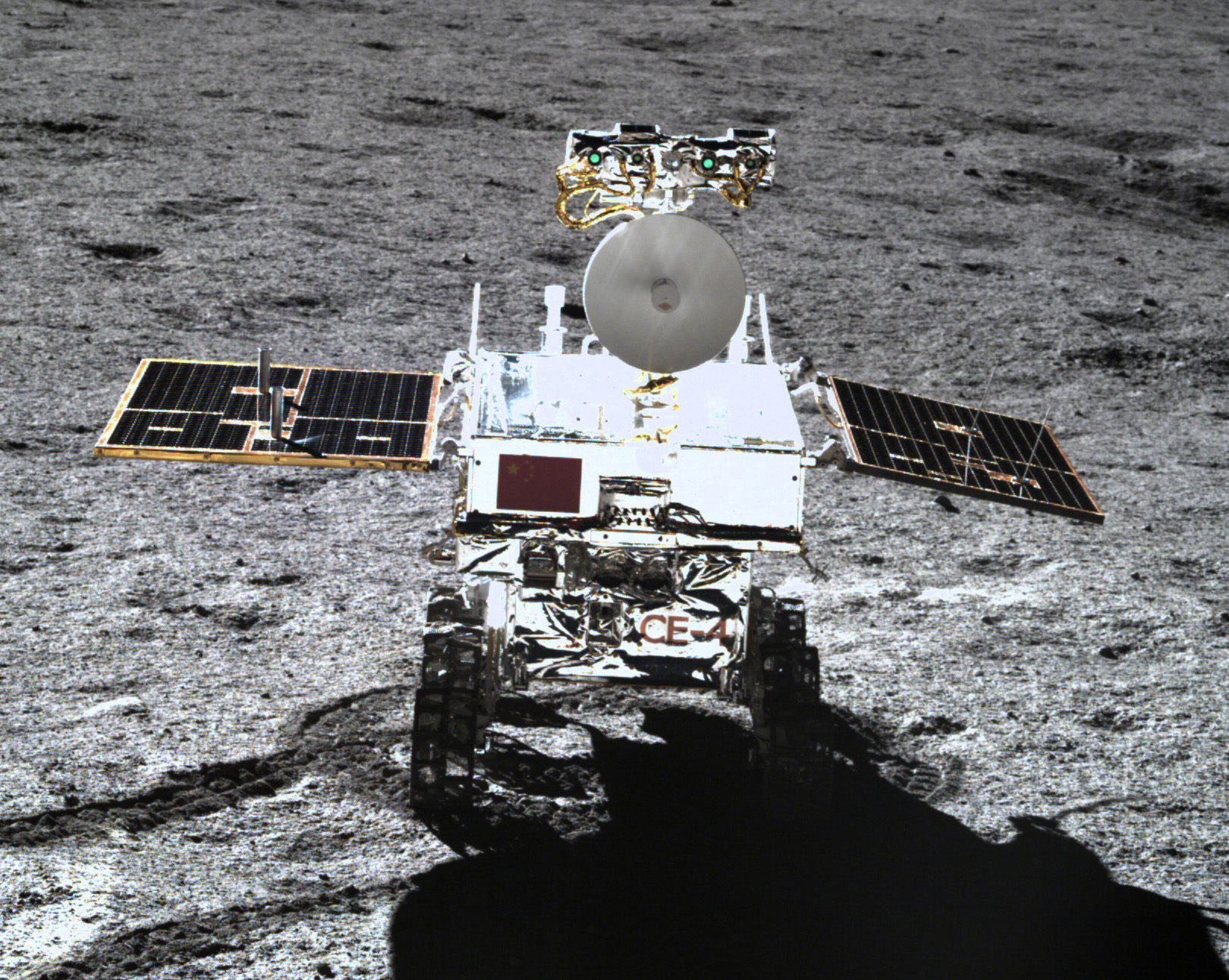
CNSA / CLEP
Yutu 2 drove 12.63 meters (41 feet) during lunar day 13, bringing its total drive distance to 357.69 meters (1171.26 feet) since its deployment on Von Kármán Crater on January 3, 2019. The Soviet Lunokhod rover of the 1970s still holds the record for long-distance driving on the Moon, but in November, Yutu 2 set a record for sheer longevity. Going strong a year later, the 140-kilogram rover has far exceeded its design lifetime of three lunar days (three Earth months). Its long life is in part a product of lessons learned from the Yutu rover on the Chang’e 3 mission in 2013, which lost mobility in its second lunar day due to a short circuit.
Tracking Yutu 2 activities reveals that the solar-powered rover awakens about 24 hours after sunrise over its location, and powers down roughly 24 hours ahead of sunset. The rover also enters a dormant phase for roughly six Earth days around local noon to protect itself from high direct solar radiation and temperatures. (While the Lunokhod rovers likewise halted during lunar noon, they did so because the lack of shadows made driving hazardous.)
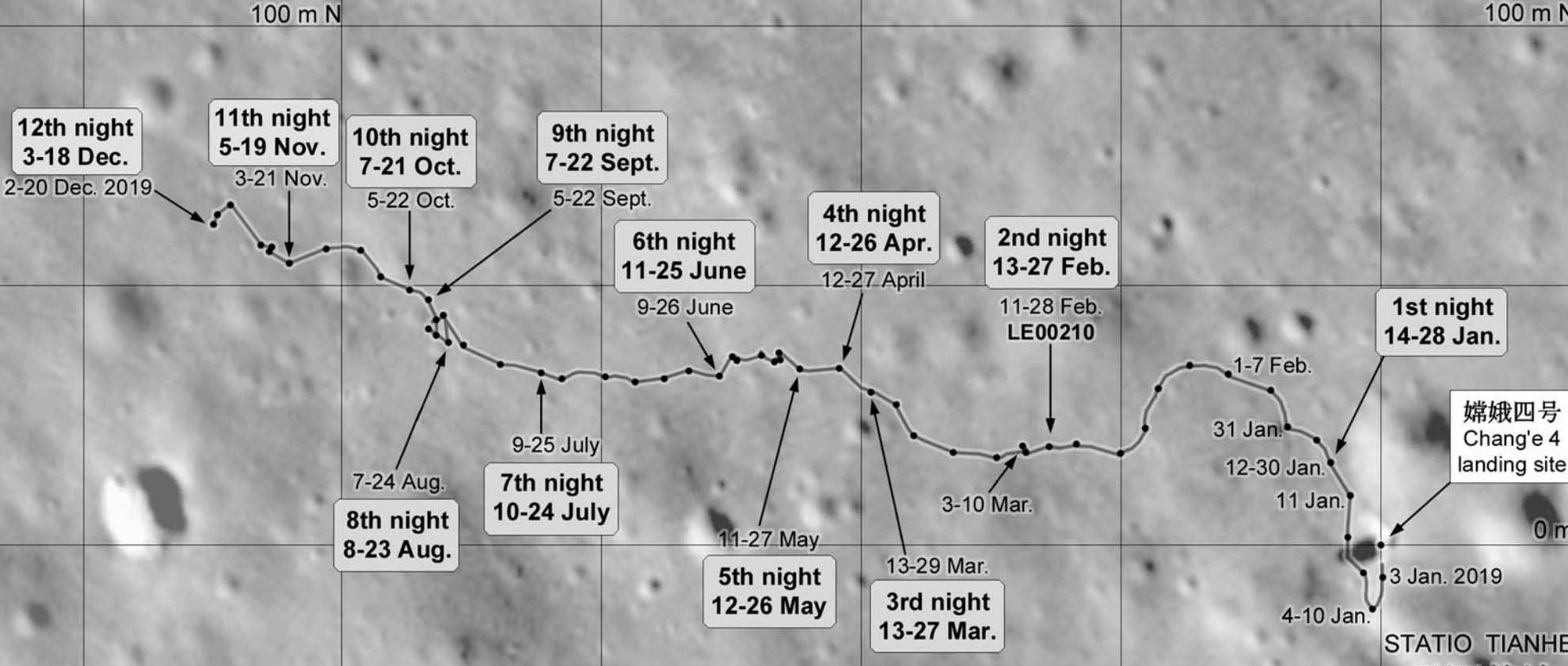
Farside science insights
Chang’e 4 has been exploring the Von Kármán Crater in the South Pole-Aitken Basin, where it landed on the farside of the Moon. Over the past year, it has returned images from the surface and carried out in situ measurements.
China’s Lunar Exploration Program (CLEP) recently made the first high-resolution images from the lander and rover available online. These include shots of the spacecraft, projection and cylindrical panoramas, and videos of the mesmerizing landing.
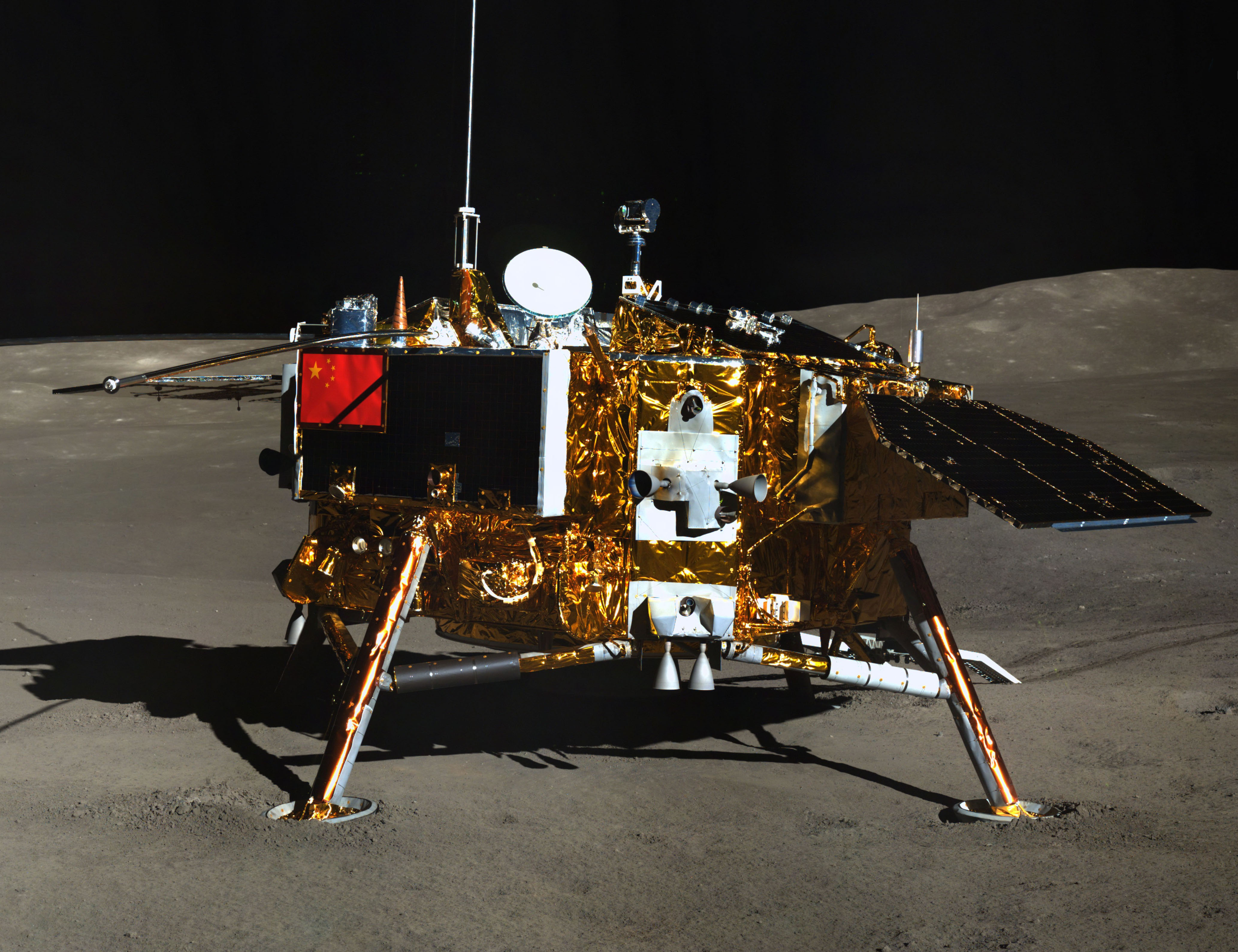
CNSA / CLEP
In the December 15th Earth and Planetary Science Letters, Yue Zongyu (Chinese Academy of Sciences) and colleagues analyzed rock fragments from the nearby Finsen Crater. Like earlier results of lunar soil, or regolith, published in the May 15th Nature, the new data suggest that some materials on the surface of Von Kármán Crater were long ago excavated from the lunar mantle. Discerning the composition of regolith in the South Pole-Aitken Basin, a primary goal of the mission, could help scientists understand the formation of this huge impact feature.
As Yutu 2 drives, its Lunar Penetrating Radar also explores what lies beneath its path. Lai Jialong (State Key Laboratory of Lunar and Planetary Sciences) and colleagues are finding that the Moon’s regolith is thicker than similar measurements of the nearside. The researchers report these results in the November 28th Geophysical Research Letters. They speculate that the thicker regolith at Chang’e 4 could come from more impacts, since the site is on the leading side of the Moon with respect to its orbit around Earth.
Yutu 2’s spectrometer also revealed a unique material in a small crater within Von Kármán. The Our Space Chinese science blog provoked widespread interest in August, when it described the substance as “胶状物”, which could be translated as “gel-like.” However, scientists now think the material is likely impact glass, which forms when rock mashes up during an impact.
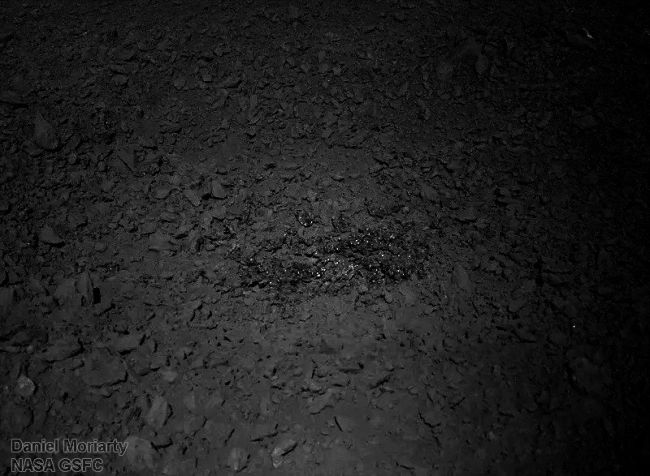
CNSA/CLEP/NASA/GSFC/Dan Moriarty
The Radio Quiet Moon
Scientists are still awaiting results from Chang'e 4's Low Frequency Radio Spectrometer, which deployed its three 5-meter antennas in late November. This instrument will take advantage of the radio quiet on the lunar farside. And now, scientists are also looking forward to results from the Netherlands-China Low-Frequency Explorer, another radio astronomy instrument that has just been deployed on the the Queqiao (“Magpie Bridge”) relay satellite.
Queqiao launched ahead of Chang’e 4 to a halo orbit around the Earth-Moon L2 Lagrangian point in order to facilitate communications between the mission and Earth. Now, after 18 months in space, three 5-meter-long antennas have been deployed from the orbiter. Only one antenna has achieved full extension; the other two have extended to only about 2.5 meters.
However, this limitation may have unintended benefits: The two shorter antennas will be better suited to collect signals from the cosmic dawn, when the first stars began to shine, while the fully extended antenna will listen for the longer-wavelength signals that come from the cosmic dark ages that preceded star formation. NCLE operates across a frequency range between 1 and 80 MHz; observations below 30 MHz are difficult to make from the ground due to interference within Earth's upper atmosphere.
Setting the Alarm Clock
Sunrise over the Statio Tianhe landing site in Von Kármán Crater will take place late January 17th. Both lander and rover are expected to begin activities for a 14th lunar day by late January 19th UT. With the abundant scientific data already returned, more science results are expected to follow throughout 2020.
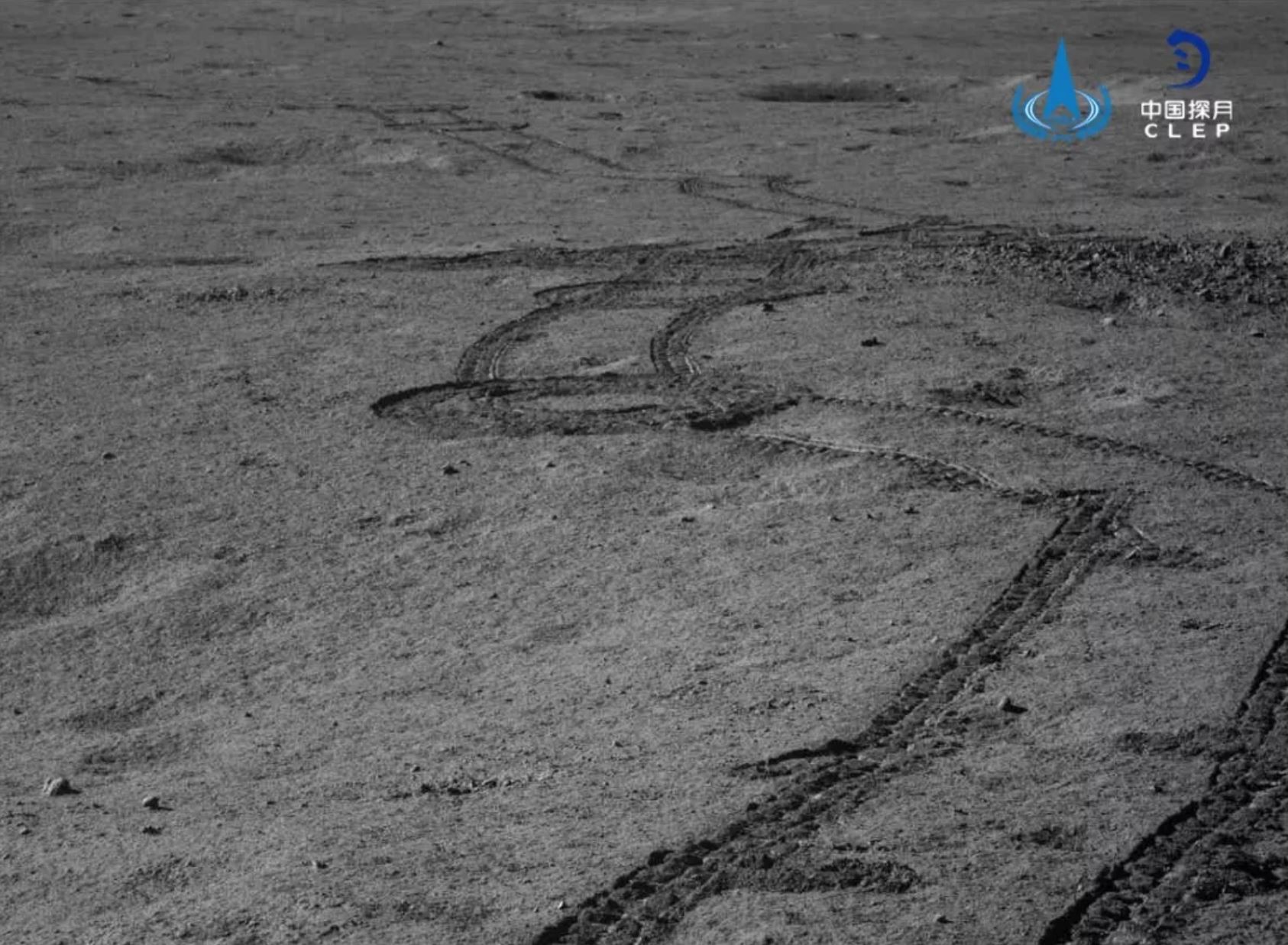
CNSA / CLEP
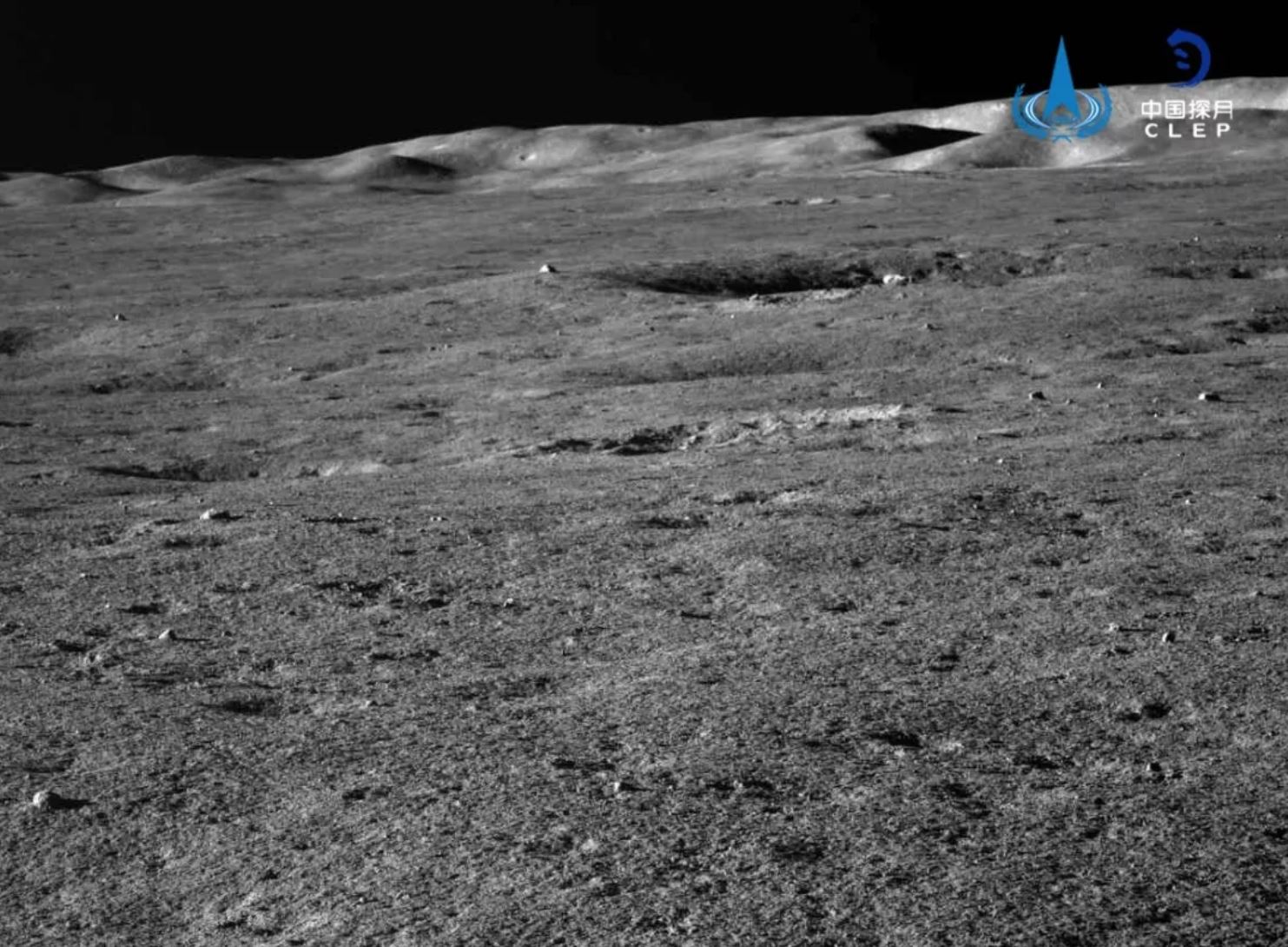
CNSA / CLEP

CNSA / CLEP
 3
3









Comments
Martin -George
January 6, 2020 at 10:38 pm
Thank you for this excellent article summarising the Chang'e 4 results to date. It's a highly successful and important mission, and the low-frequency radio astronomy that can be done from the lunar far side is a fascinating topic. However, your comment that observations below 30 MHz being possible 'only from space' is not quite correct. Certainly, as one moves lower and lower in frequency, the lack of transmission through the ionosphere becomes an increasing problem. However, under ideal conditions (during solar minimum on winter nights), ground-based observations have been made right down to 2 MHz and even a little lower. Notably, this was the case here in Tasmania, one of the best global locations for this work (in relation to ionospheric transmission), from the 1950s to the 1980s by the University of Tasmania and Grote Reber. They worked mostly independently. Reber made a radio map of the sky at 2.085 MHz, and the University produced maps at a range of frequencies below 30 MHz.
Martin George, Launceston Planetarium, Tasmania, Australia
You must be logged in to post a comment.
Monica Young
January 7, 2020 at 12:14 pm
Impressive, thank you for sharing this work! I have revised the text accordingly.
You must be logged in to post a comment.
mxyzptlk
January 11, 2020 at 1:30 am
I'm no astronomer. Why does a lunar "day" seem to be one earth month long? I'm assuming Yutu 2 is in darkness during the lunar "night". Please explain.
You must be logged in to post a comment.
You must be logged in to post a comment.